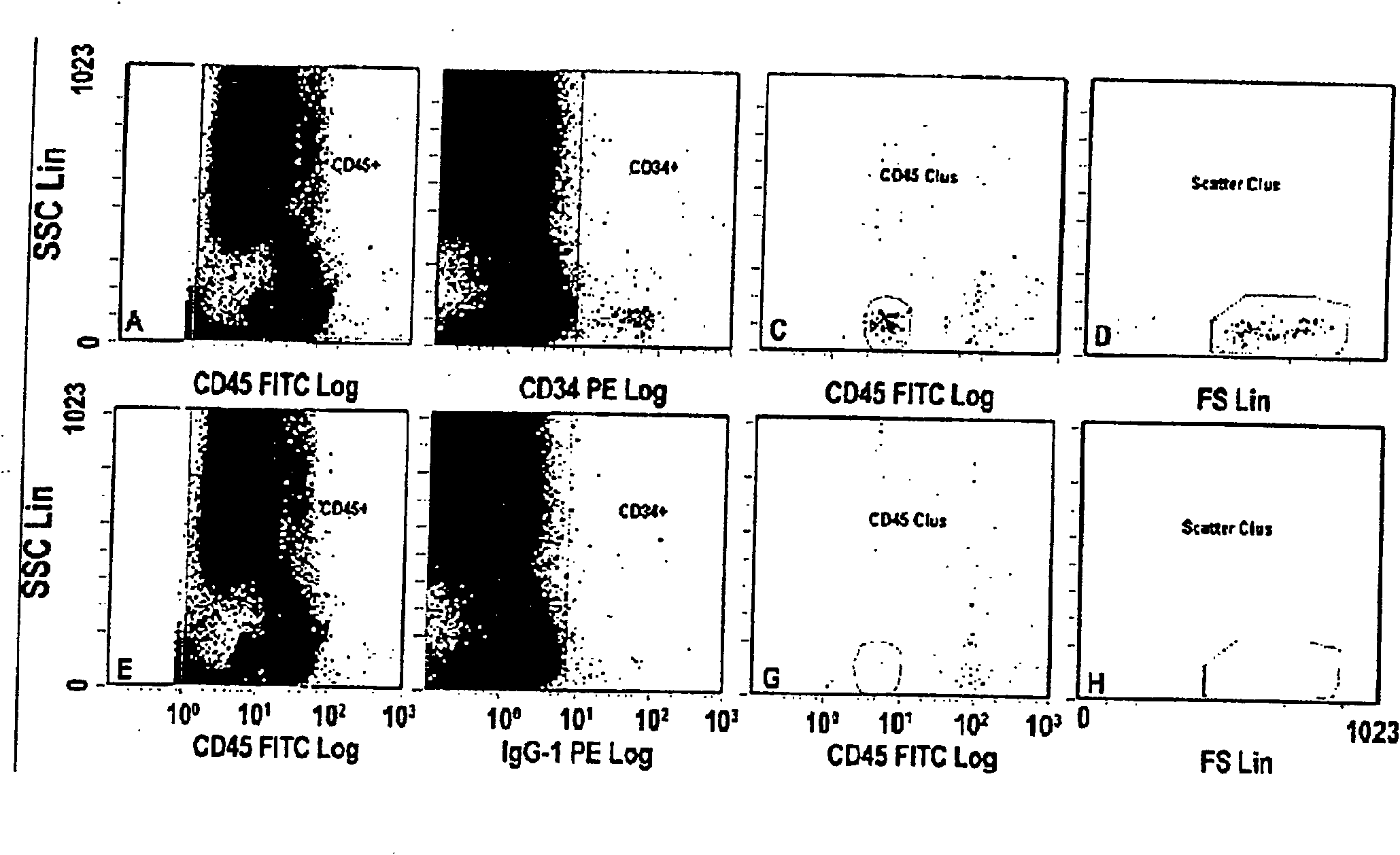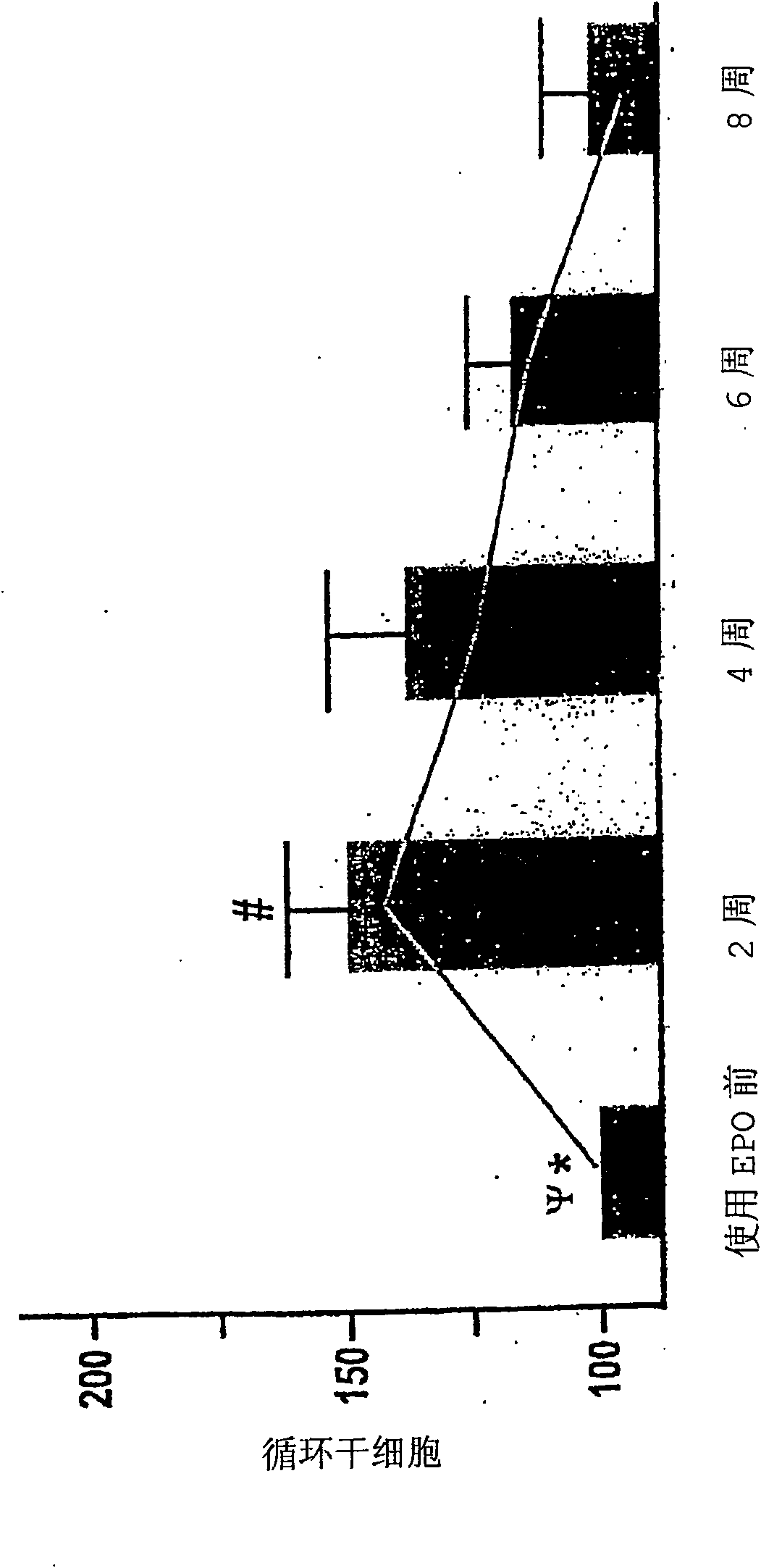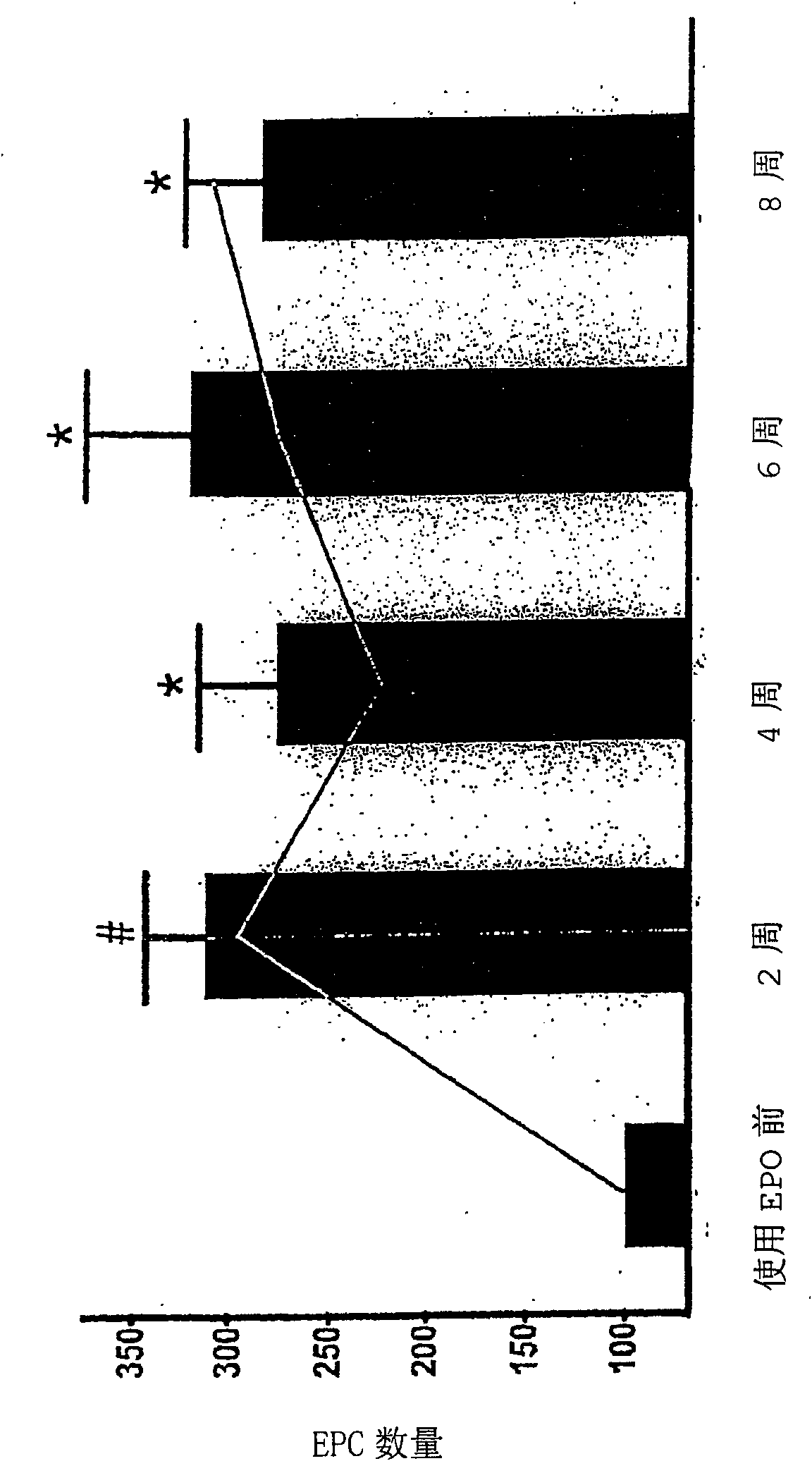Use of low-dose erythropoietin for stimulating endothelial precursor cells, regenerating organs, and slowing down progression of end organ damages
A technology of erythropoietin and endothelial progenitor cells, which can be used in medical preparations containing active ingredients, anti-inflammatory agents, skin diseases, etc. The effect of increasing, increasing the number
- Summary
- Abstract
- Description
- Claims
- Application Information
AI Technical Summary
Problems solved by technology
Method used
Image
Examples
Embodiment 1
[0161] Example 1 The effect of EPO on patients with renal anemia
[0162] The effect of EPO on renal anemia (Hb < 10.5 g / dl) caused by end-stage renal disease (before death from renal failure; creatinine clearance < 35 ml / min) was studied. Eleven patients were treated with an average weekly dose of 5000 IU rhEPO (recombinant human EPO) by intravenous or subcutaneous injection for at least 8 weeks. After EPO treatment, the endothelial progenitor cells in the patient's blood were examined over 20 weeks, and the number of endothelial progenitor cells was measured by flow cytometry and culture test at 0, 2, 4, 6 and 8 weeks after EPO treatment and differentiation status were analyzed.
[0163] Circulating peripheral blood stem cells (CPBSC) represent a small population of cells that express both the CD34 and CD45 antigens. With the aid of flow cytometry, a method for detecting the number of CPBSCs has been developed based on the ISHAGE method (Sutherland et al., J. Hematother....
Embodiment 2
[0170] Example 2 , Promoting wound healing through systemic use of rhEPO
[0171] FVB / N mice were anesthetized with isoflurane by means of inhalational anesthesia. Both hind limbs were depilated with depilatory solution and disinfected with 70% alcohol. Skin wounds were made on the right abdomen of each test rat using a 4 mm disposable sterile biopsy punch. The opposite side was used as an internal control. After the operation, penicillin G (20000 units / kg) was used for one-time antibiotic treatment. The human recombinant EPO analog Aranesp (0.1 μg / kg body weight) was injected subcutaneously once a week throughout the experiment. Treatment began 7 days prior to tissue punch wounding. The result is as Figure 8 shown. The figure shows that the use of EPO can significantly speed up the wound repair process. Figure 19 Shows the effect of EPO on wound repair. The figure shows that a typical skin wound was made on a mouse with a tissue punch, and after 7-8 days of treatm...
Embodiment 3
[0172] Example 3 , slowing the progress of chronic kidney injury by EPO treatment
[0173] Eight-week-old Sprague Dawley rats were anesthetized with ketamine (120 mg / kg) and ropon (10 mg / kg). The right kidney was excised on day 0 and immediately placed in formalin for histological examination. The arteries feeding the upper and lower poles of the left kidney were ligated. In this way, kidney damage occurs in the corresponding kidney area, and only the middle third remains functional. The rats were subcutaneously injected with Aranesp (0.1 μg / kg body weight) once a week, while the control group was injected with NaCl.
[0174] Figure 10 Kaplan-Mayer survival curves for the two experimental groups are shown. Animals treated with Aranesp showed a clear survival advantage compared to animals treated with saline.
[0175] Figures 15-18 It has been shown that the kidney tissue processed by EPO does not show obvious pathological changes, but serious pathological changes can...
PUM
| Property | Measurement | Unit |
|---|---|---|
| molecular weight | aaaaa | aaaaa |
Abstract
Description
Claims
Application Information
 Login to View More
Login to View More - R&D Engineer
- R&D Manager
- IP Professional
- Industry Leading Data Capabilities
- Powerful AI technology
- Patent DNA Extraction
Browse by: Latest US Patents, China's latest patents, Technical Efficacy Thesaurus, Application Domain, Technology Topic, Popular Technical Reports.
© 2024 PatSnap. All rights reserved.Legal|Privacy policy|Modern Slavery Act Transparency Statement|Sitemap|About US| Contact US: help@patsnap.com










